INSIGHT: Hot stones and olive trees
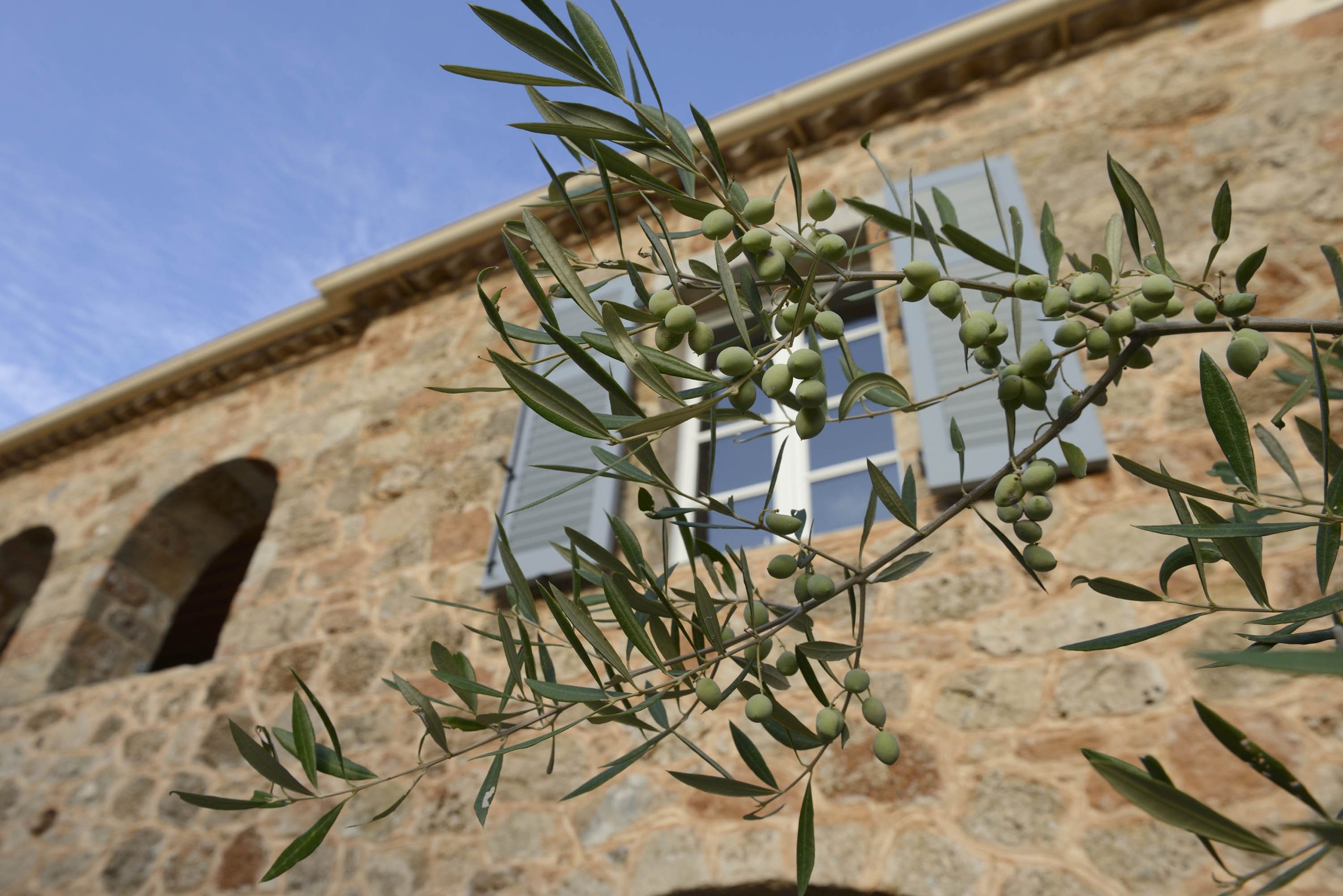
‘England is like living in the heart of a lettuce… I pine for hot stones and thorns and olive trees and prickly pears,’ wrote British author and traveller Sir Patrick Leigh Fermor. In the 1960s he adopted the Mani in Greece as his homeland and Kardamyli as his home. It was this home that Sir Patrick and his wife, Joan, donated to the Benaki Museum in order to contribute to its own mission, with the expressed wish that the property should always remain open to the public, and host authors and researchers from around the world.
The Leigh Fermor House legacy is one of the most important donations the Benaki Museum in Athens has received in recent decades and its development and operation have been a major priority for the institution. On Saturday 19 October, 2019, the Leigh Fermor House at Kardamyli was officially inaugurated by HE the President of the Hellenic Republic, Mr Prokopios Pavlopoulos, in the presence of many distinguished guests, friends and family members.
THE PATRICK & JOAN LEIGH FERMOR HOUSE
The property is located in the Kalamitsi area of Kardamyli in Messenia and extends over approximately nine acres. Its three stone buildings were designed by the architect Nikos Hatzimichalis in close collaboration with the Leigh Fermors and were completed in the mid-1960s. By general consensus, this is one of the most beautiful properties in Greece. With a set of narrow stone steps leading down to a small pebble beach hidden from sight, the house is in direct contact with the sea, and the low, discreet, stone buildings and beautiful Mediterranean garden descending to the water’s edge make this an ideal place for concentration and creativity. The property includes the main house, a building used by Sir Patrick as his study, an auxiliary house, and a further building formerly used as a hencoop.
Ownership of the property transferred to the Benaki Museum in 2011 with the death of Sir Patrick, and since that time an extensive programme of repair works and enhancements, generously funded by the Stavros Niarchos Foundation, has transformed the estate into an impressive hospitality venue. It will now host notable figures from the worlds of scholarship and art as well as being a centre for educational activities in collaboration with institutions in Greece and internationally. Under the terms of the bequest, the property can be rented for 90 days each year and the Benaki Museum has selected Aria Hotels as its partner for all guest and hospitality services, beginning this year. Since July 2019. the Leigh Fermor House has been open to the public with guided tours available each week.
PREPARATION AND EXECUTION OF REPAIR WORKS
From May 2017, all contents were moved to Athens with Benaki Museum Library staff undertaking the laborious task of cataloguing 6,000 volumes, incorporated as ‘The Leigh Fermor Collection’. Some books remained in Athens, mostly for security reason due to their rarity or value, while the rest have been returned to the house.
The Benaki Museum Conservation Department then undertook restoration of the largest part of the property’s furniture, light fittings and other objects. Their brief was to preserve the ambience of interiors and reinstate as many pieces as possible in their original places. To better fit the new use of the house, some furnishings were replaced with modern versions. Many of the original paintings were restored while important works of art (by Edward Lear, Nikos Hadjikyriakos-Ghika and John Craxton, among others) were replaced by facsimiles. High-quality prints sourced from the Benaki Museum collections were used to complement original furnishings throughout.
The form of the buildings allowed for the creation of five independent guestrooms, each consisting of a bedroom, a working area and a bathroom, with very few interventions necessary to the original fabrics and interior arrangement. Three guestrooms are located in the main house, one in the external studio used as the study, and another in the adjoining auxiliary house. Each guestroom provides all facilities necessary for comfortable accommodation combined with conditions conducive to isolation and concentration; communal spaces at the main house can be used as places of gathering and relaxation.
The electrical, plumbing and sewerage systems were fully replaced; all roofs were insulated and partially or fully repaired; all external walls were repointed and, in order to maintain the rough texture of internal walls, the same mixture the Leigh Fermors applied in the 1960s was reproduced and applied. Timber doors, windows and shutters were either repaired or replaced with exact copies of the originals; all bathrooms and the main kitchen were fully refurbished. Since none of the buildings had heating provision apart from fireplaces, a heating and cooling system was installed throughout the property.
Work on the estate concentrated on repairing and plastering boundary walls, filling-in dry-stone walls and levelling the ground in certain areas. The garden has been renovated; damaged plants, where necessary, have been replaced and additional ones planted. At a low terrace within the estate a relatively small swimming pool was installed, to enhance the experience for all guests.
Shortly after Patrick Leigh Fermor’s death, Angelos Delivorrias commissioned a bust of him to be cast in bronze by Greek sculptor Praxiteles Tzanoulinos; it has recently been placed in the garden of the property.
Cataloguing of the books was supported by the Friends of the Benaki Museum with the Stavros Niarchos Foundation funding all repair works and equipment installation. The repair works and refurbishment team consisted of Andreas Kourkoulas and Maria Kokkinou (architects), Pantelis Argyros (mechanical/electrical engineer), Dimitris Pastras (civil engineer), Helli Pangalou and partners (landscape architect), Ballian Techniki with Thanasis Mekkas onsite (contractors and engineers), and Takis Mastrantonis and Efi Delinikola of Stadion (consultants).
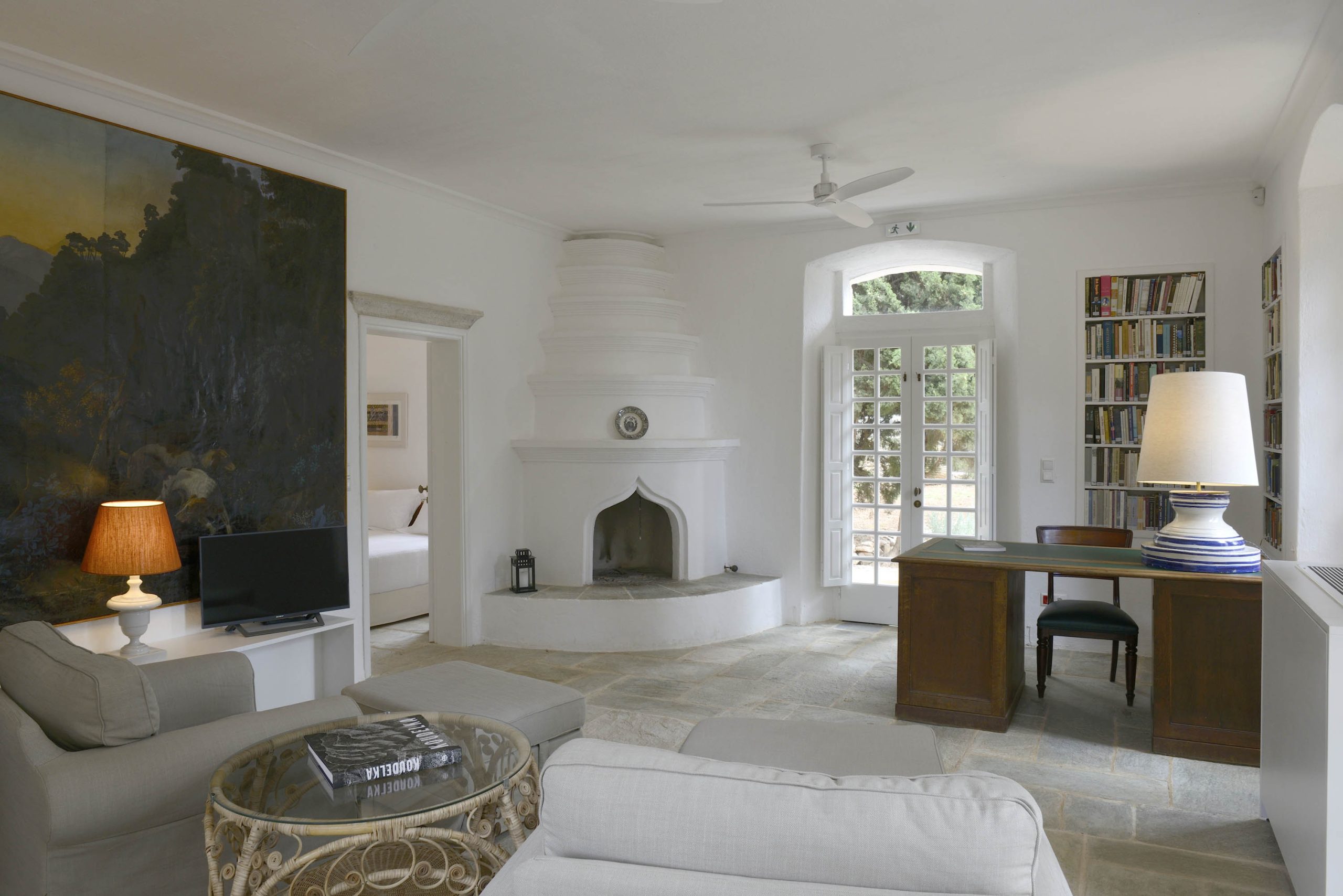
FUTURE OPERATION
The operation of the Leigh Fermor House will include: fellowships; complimentary hospitality for notable figures from the world of letters, the arts and scholarship; higher-education activities in collaboration with universities and institutions in Greece and internationally; educational and cultural events for the wider public as well as the local community; and guided tours throughout the year.
The fellowship programme will be organised in partnership with the following universities: Freie Universität (Institut für Griechische und Lateinische Philologie), Princeton University (Stanley J. Seeger ’52 Center of Hellenic Studies) and UCLA – University of California Los Angeles (Stavros Niarchos Foundation Center for the Study of Hellenic Culture). Two fellowship periods are envisaged per academic year, one 1.5-month-long in autumn and another 2.5-month-long in spring. The programme will operate in pilot mode over the first five years of the Leigh Fermor House operation. The fellows’ fields of expertise will be connected to Benaki Museum collections as well as disciplines covered by the curricula of the aforementioned departments in partner universities. Fellowships will be awarded to tenured academics, research associates, emeriti faculty members and independent scholars with a distinguished record of publications.
The unique location of the Leigh Fermor House, its special architecture and the reputation of its original owner, in conjunction with the management of the Benaki Museum and the support of the Stavros Niarchos Foundation, ensure the creation of a special centre which will soon gain a place among the most important peer institutions in Europe and the Americas.
Beyond promoting Greek culture through a novel operational model, the Leigh Fermor House will contribute to intercultural dialogue and the cultivation of deep connections between guest academics, researchers and creators on the one side and the Greek natural and cultural landscape on the other.
Finally, the heightened flow of distinguished visitors and the increased publicity generated by the Leigh Fermor House will undoubtedly contribute to the touristic and economic development of Kardamyli and Mani in general.
A HISTORY OF THE DONATION
The connection between Patrick Leigh Fermor and the Benaki Museum goes back to World War II, when he became a friend of its founder, Antonis Benakis. He offered Leigh Fermor a space in the Museum where he could write, and the friendship continued through his daughter, Irini Kalliga, and subsequently the museum’s long-standing director, Angelos Delivorrias.
On 2 August, 1996, Patrick and Joan Leigh Fermor signed the deed that would transfer the Kardamyli house’s ownership to the Benaki Museum after their death. This particular choice had been suggested by Tzannis Tzannetakis, their dear friend and translator of Patrick’s book Mani, who would later become Greece’s prime minister. In the donation contract, the Leigh Fermors appointed Tzannetakis and their lawyer Antonis Masouridis as supervisors for the implementation of the terms of the donation. Today, the Tzannetakis link is maintained by his two children, Tonia and Petros, who serve as trustees.
The Museum acquired full ownership of the property in autumn 2011 after Patrick Leigh Fermor’s death on 10 June, 2011. The executors of his will granted to the Museum the largest part of the House’s library and furnishings as well as some of the works of art that decorated it.
From 2020, Aria Hotels will be offering this unique, historic building as a villa rental for three months each summer. It can be rented as a whole comprising the Main House, Traditional House and Guest House, to accommodate parties of up to ten people, or as individual self-contained suites with the Traditional House & Guest House, each sleeping up to two people. The property also features a swimming pool, private beach and parking area to which all guests have access. See https://www.ariahotels.gr/en/patrick-leigh-fermor
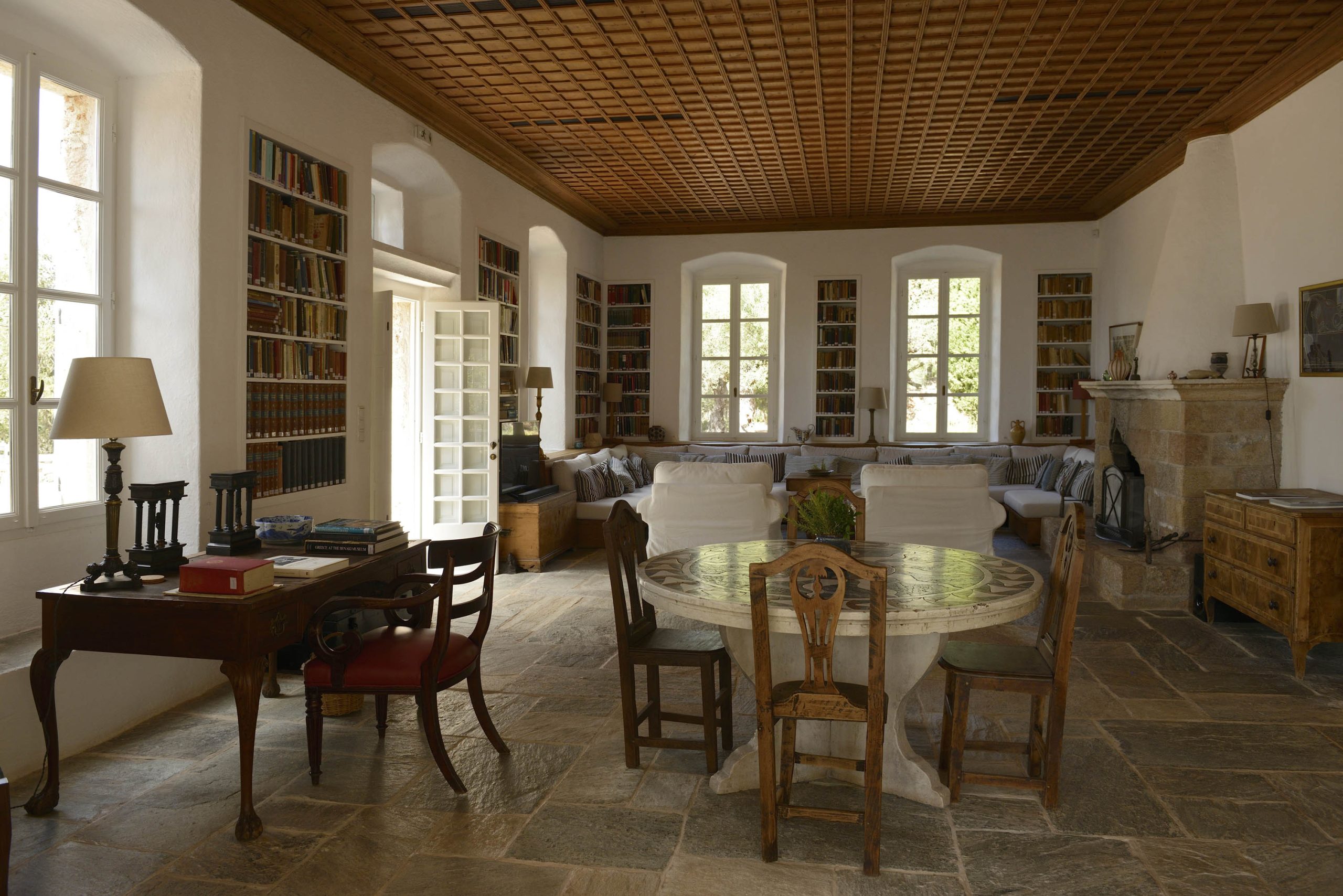

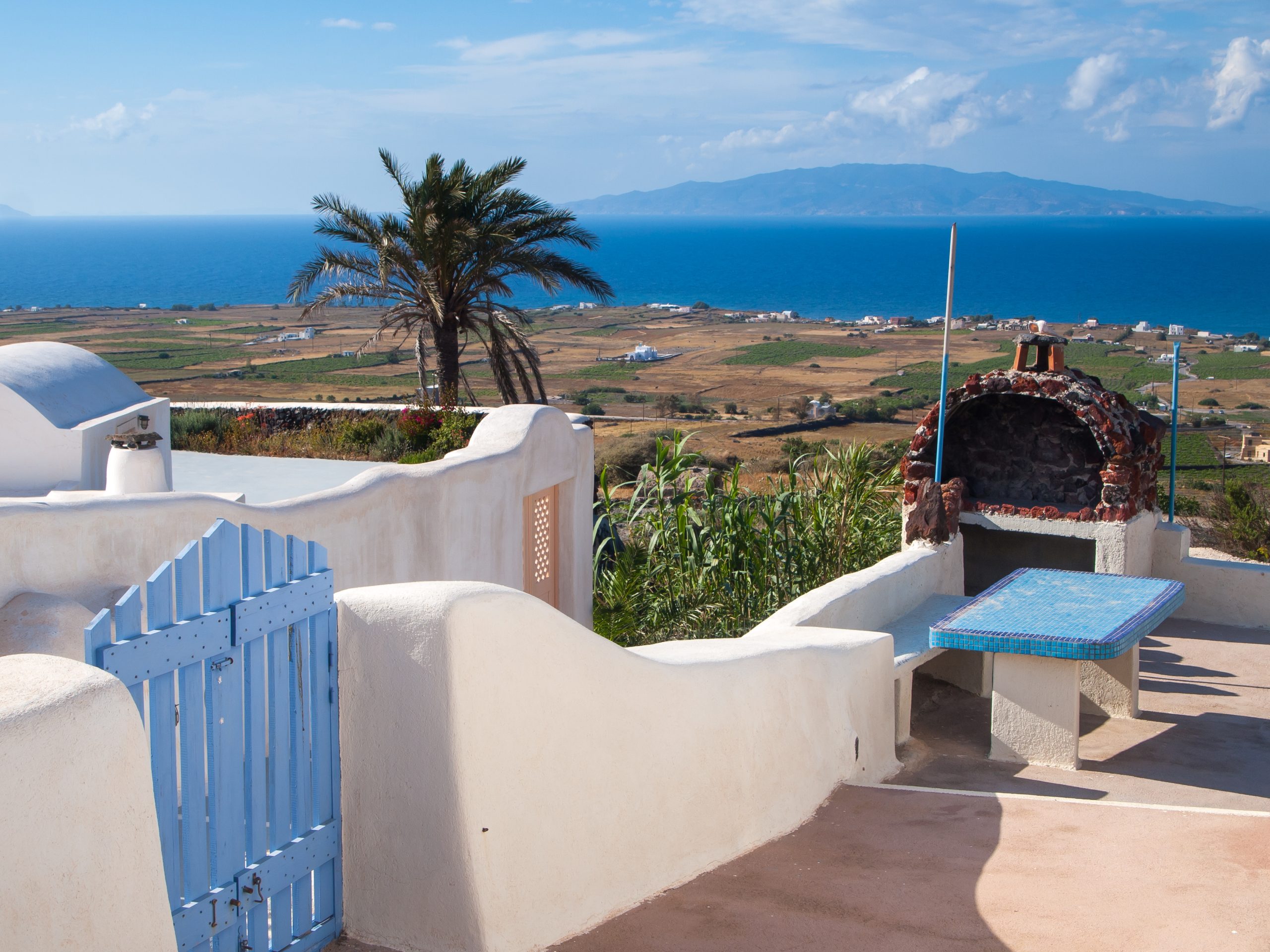 Aria Hotels adds to its Santorini property portfolio
Aria Hotels adds to its Santorini property portfolio 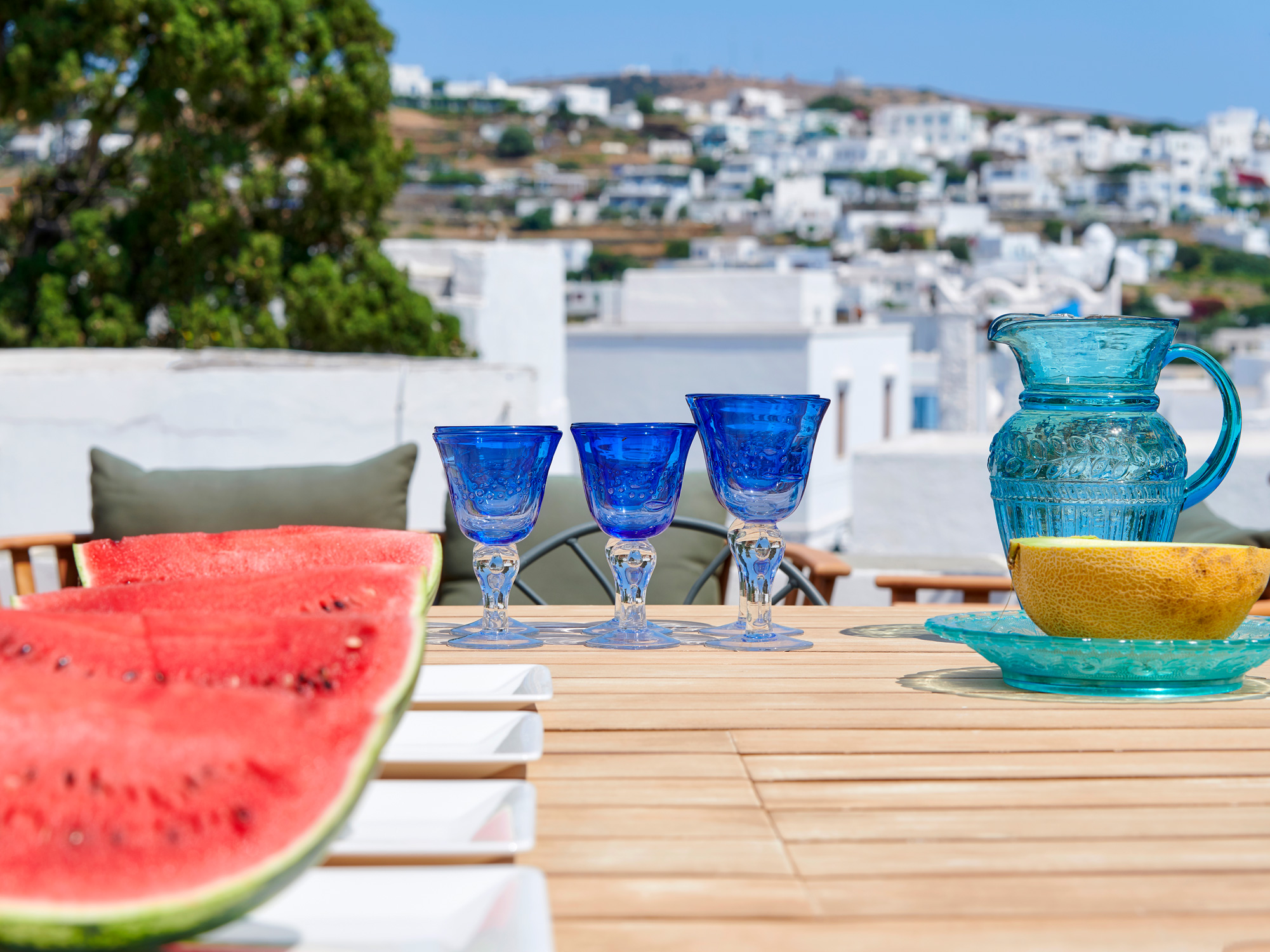 Aria boosts its portfolio in Greece this summer with new properties
Aria boosts its portfolio in Greece this summer with new properties 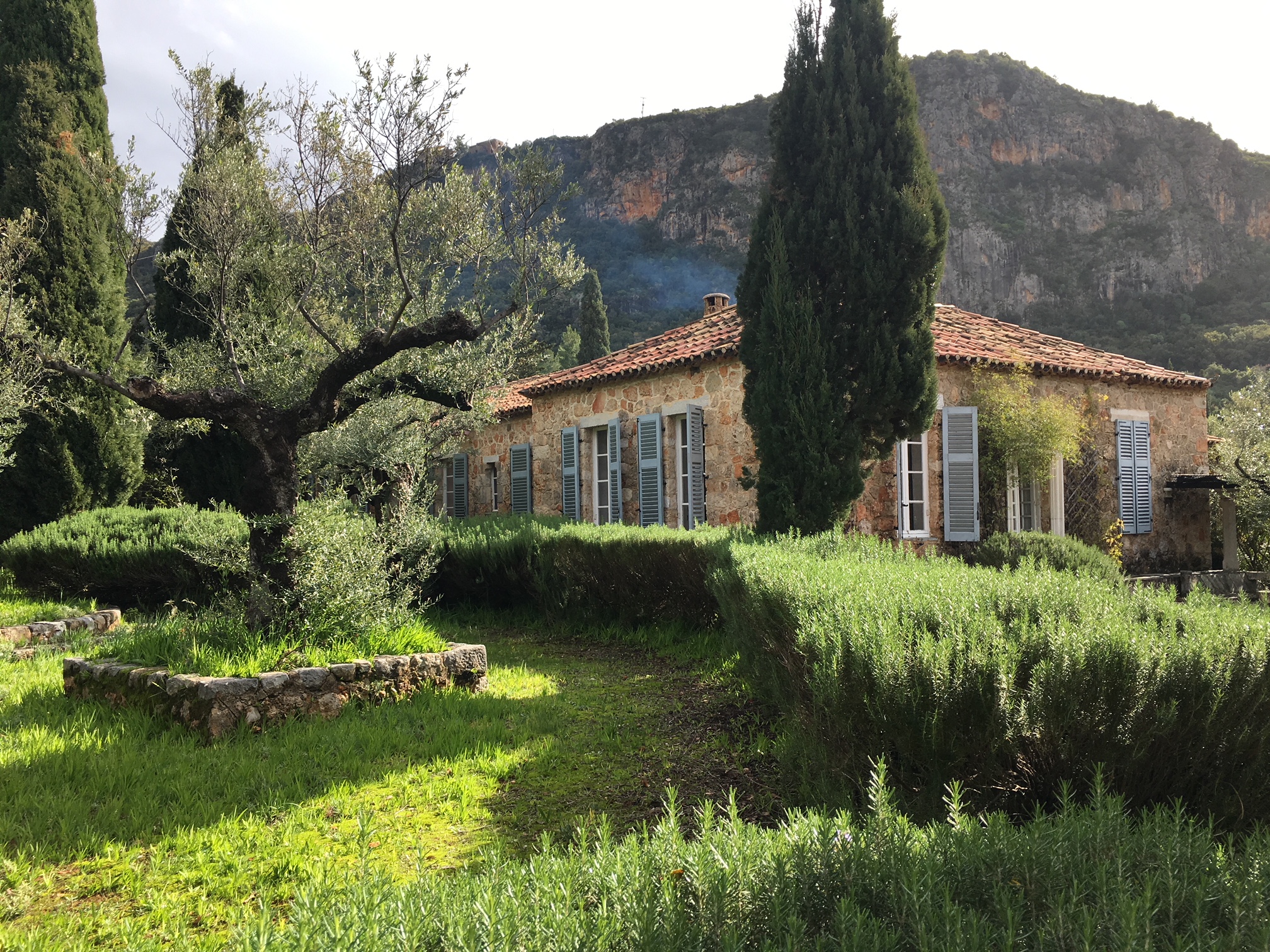 Benaki Museum and Aria collaborate at Leigh Fermor House
Benaki Museum and Aria collaborate at Leigh Fermor House